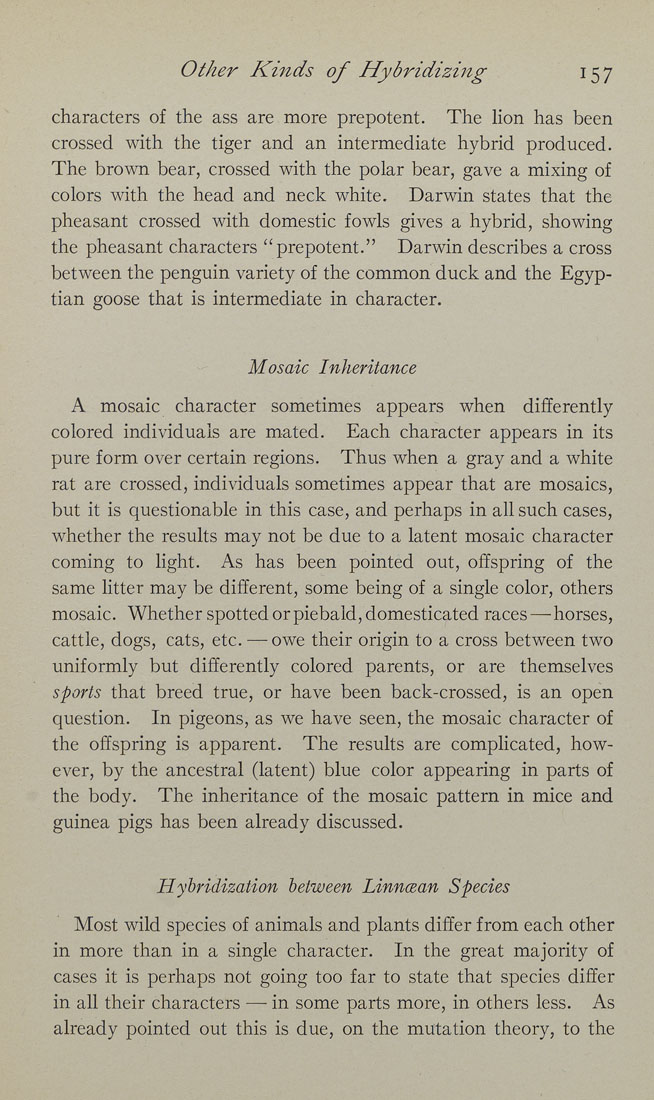Other Kinds of Hybridizing 157
characters of the ass are more prepotent. The lion has been
crossed with the tiger and an intermediate hybrid produced.
The brown bear, crossed with the polar bear, gave a mixing of
colors with the head and neck white. Darwin states that the
pheasant crossed with domestic fowls gives a hybrid, showing
the pheasant characters "prepotent." Darwin describes a cross
between the penguin variety of the common duck and the Egyp¬
tian goose that is intermediate in character.
Mosaic Inheritance
A mosaic character sometimes appears when differently
colored individuals are mated. Each character appears in its
pure form over certain regions. Thus when a gray and a white
rat are crossed, individuals sometimes appear that are mosaics,
but it is questionable in this case, and perhaps in all such cases,
whether the results may not be due to a latent mosaic character
coming to light. As has been pointed out, offspring of the
same litter may be different, some being of a single color, others
mosaic. Whether spotted or piebald, domesticated races—horses,
cattle, dogs, cats, etc. —owe their origin to a cross between two
uniformly but differently colored parents, or are themselves
sports that breed true, or have been back-crossed, is an open
question. In pigeons, as we have seen, the mosaic character of
the offspring is apparent. The results are complicated, how¬
ever, by the ancestral (latent) blue color appearing in parts of
the body. The inheritance of the mosaic pattern in mice and
guinea pigs has been already discussed.
Hybridization between LinncBan Species
Most wild species of animals and plants differ from each other
in more than in a single character. In the great majority of
cases it is perhaps not going too far to state that species differ
in all their characters — in some parts more, in others less. As
already pointed out this is due, on the mutation theory, to the
|








